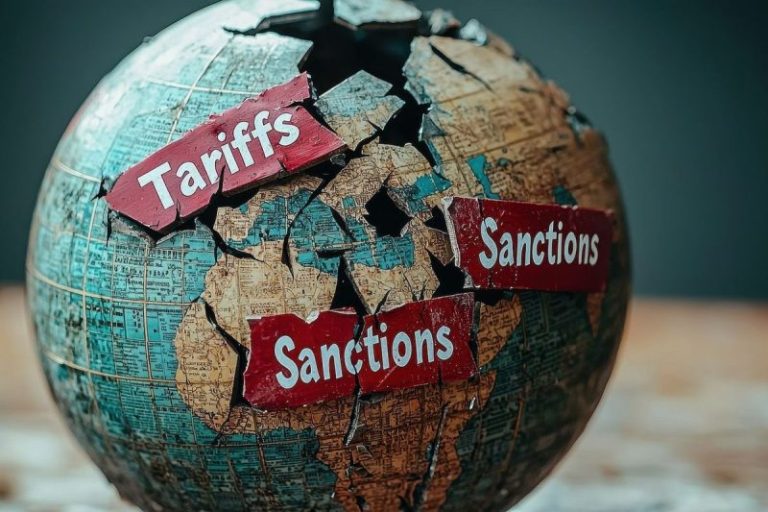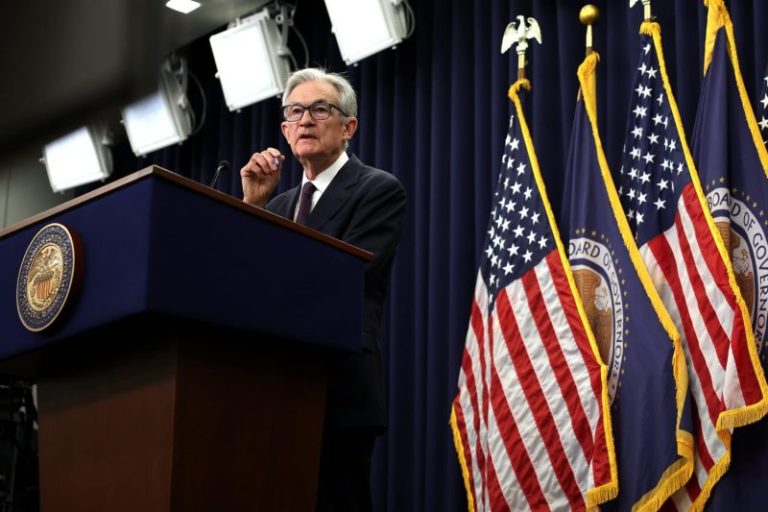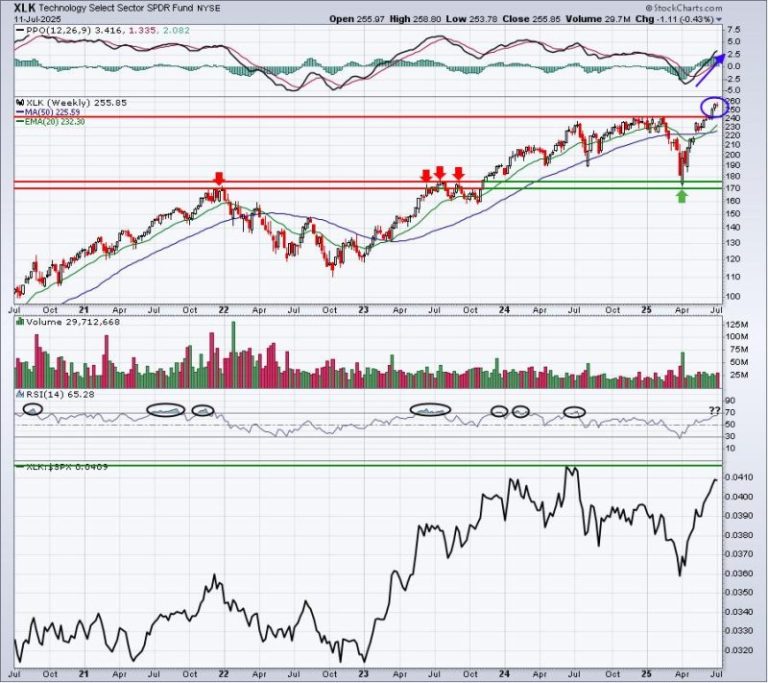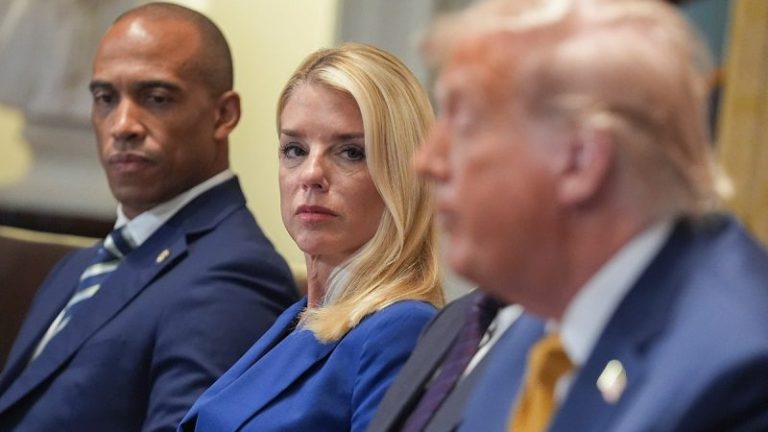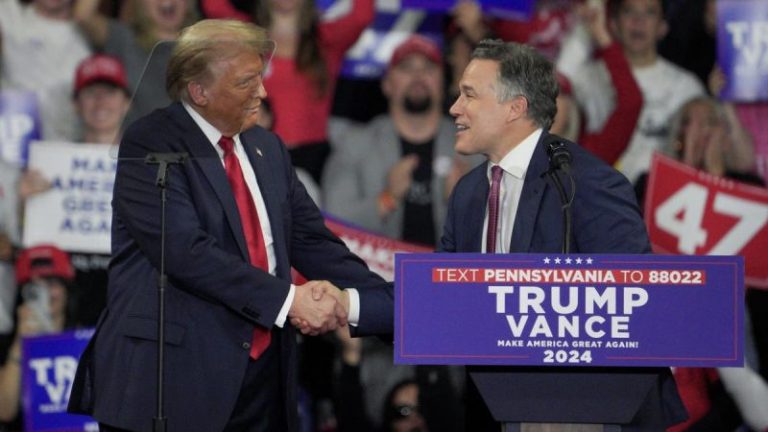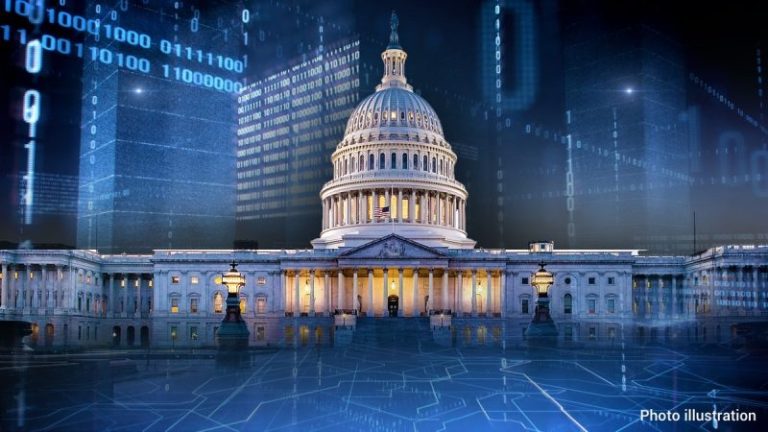Attorney General Pam Bondi, FBI Director Kash Patel and Deputy FBI Director Dan Bongino all called for Jeffrey Epstein’s sex-trafficking secrets to be made public long before the DOJ’s stunning about-face last week.
‘This systemic review revealed no incriminating ‘client list,’’ read a joint memo leaked to Axios a week ago. ‘There was also no credible evidence found that Epstein blackmailed prominent individuals as part of his actions. We did not uncover evidence that could predicate an investigation against uncharged third parties.’
The revelation shocked many MAGA Republicans and Trump supporters, who had for years believed that Epstein was at the heart of a child sex trafficking ring that involved blackmailing prominent movers and shakers worldwide. Many also doubt the government’s finding that Epstein died by his own hand in New York’s Metropolitan Correctional Center in 2019.
Trump has since brushed off the Epstein investigation as old news, slamming a reporter who asked about Epstein during a Cabinet meeting last week, and posting a Truth Social message on Saturday defending Bondi for her leadership over the case and claiming that Epstein is ‘somebody that nobody cares about.’
‘LET PAM BONDI DO HER JOB — SHE’S GREAT! The 2020 Election was Rigged and Stolen, and they tried to do the same thing in 2024 — That’s what she is looking into as AG, and much more,’ Trump wrote in a lengthy Truth Social post defending Bondi. ‘One year ago our Country was DEAD, now it’s the ‘HOTTEST’ Country anywhere in the World. Let’s keep it that way, and not waste Time and Energy on Jeffrey Epstein, somebody that nobody cares about.’
As MAGA supporters continue calling for details on Epstein’s crimes and alleged ties to the world’s elite, Fox News Digital took a look back at what Bondi, Patel and Bongino had to say about Epstein before the anticlimactic memo dropped.
AG PAM BONDI
Just a couple of weeks after Bondi was sworn in as the nation’s 87th attorney general on Feb. 5, she joined Fox News Channel and touted her mission of transparency, most notably on Epstein, and the assassinations of former President John F. Kennedy and Martin Luther King Jr.
‘The DOJ may be releasing the list of Jeffrey Epstein’s clients. Will that really happen?’ Fox News’ John Roberts asked Bondi in an interview on Feb. 21.
‘It is sitting on my desk right now to review. That’s been a directive by President Trump. I’m reviewing that. I’m reviewing the JFK files, the MLK files. That is all in the process of being reviewed because that was done at the directive of the president from all these agencies,’ Bondi responded.
‘Have you seen anything that you said, ‘Oh, my gosh?’’ Roberts asked.
‘Not yet,’ Bondi responded.
Bondi released an initial batch of files on Epstein to a handful of social media personalities in late February, but the packets did not contain new evidence. However, Bondi once again vowed to come through on Trump’s message of transparency on Epstein’s ‘disgusting actions.’
‘This Department of Justice is following through on President Trump’s commitment to transparency and lifting the veil on the disgusting actions of Jeffrey Epstein and his co-conspirators,’ Bondi said in press release. ‘The first phase of files released today sheds light on Epstein’s extensive network and begins to provide the public with long overdue accountability.’
The next month, in March, Bondi joined Fox News’ Sean Hannity and said she ordered the FBI to deliver evidence related to Epstein under a firm deadline, claiming a local field office in New York initially withheld evidence on Epstein.
‘I gave [the FBI] a deadline of Friday at 8 a.m. to get us everything,’ Bondi said. ‘And a source had told me where the documents were being kept, Southern District of New York, shock. So we got them all by Friday at 8 a.m.’
‘Thousands of pages of documents. I have the FBI going through them… and Director Patel is going to get us a detailed report as to why the FBI withheld all of those documents,’ she continued at the time.
Bondi again in May fanned the flames of a potential Epstein bombshell when she stated there were no files missing from her investigation and that the DOJ had uncovered tens of thousands of videos showing Epstein with ‘children and child porn.’
‘No, the FBI, they’re reviewing tens of thousands of videos of Epstein with children or child porn,’ Bondi told the media in May when asked about the Epstein files.
‘There are hundreds of victims,’ she added. ‘… The FBI is diligently going through that.’
Bondi was confronted about her February comments on the Epstein files during a Cabinet meeting on Tuesday, where she defended her remarks to Fox News regarding claims that the Epstein files were on her desk and ready for review.
‘I was asked a question about the client list, and my response was, ‘it’s sitting on my desk to be reviewed,’ meaning the file along with the JFK, MLK files as well,’ Bondi responded.
‘That’s what I meant by that. Also, to the tens of thousands of video, they turned out to be child porn downloaded by that disgusting Jeffrey Epstein,’ she continued, saying no such videos would be released or ‘see the light of day.’
DIRECTOR PATEL
Long before Patel was floated and named as Trump’s FBI chief, the longtime opponent of the ‘Deep State’ claimed the FBI was in control of Epstein’s reported client list and said it could be released on Trump’s first day in office via a subpoena.
‘That’s under direct control of the director of the FBI,’ Patel said in 2023 during an interview with BlazeTV’s Glenn Beck. ‘That’s a thing I think President Trump should run on. On day one, roll out the black book.’
Patel added in an interview with conservative social media personality Benny Johnson that same year that the FBI was keeping the list private due to the high-profile names in Epstein’s orbit.
‘Put on your big boy pants and let us know who the pedophiles are,’ Patel said, aiming his remarks at Republican lawmakers.
He continued that ‘one subpoena to the FBI’ would have forced the release of the alleged list during the same interview with Johnson.
Patel, who was seen as one of Trump’s more controversial Cabinet picks, earned the praise of key senators for his public calls to uncover details on Epstein ahead of his confirmation hearings. Sen. Marsha Blackburn, R-Tenn., for example, promoted Patel’s nomination as FBI director as he would reveal details on Epstein.
‘I look forward to working with Kash Patel as FBI Director to release Epstein’s flight logs and black book,’ Blackburn posted to X following Patel’s nomination in November. ‘Under the Trump administration, the American people are going to get answers.’
Fast-forward to his confirmation hearing in January, Patel vowed he would work to uncover Epstein’s alleged vast web of crimes and connections to high-profile individuals.
‘I want to talk to you about the Epstein case,’ Blackburn told Epstein in January during his confirmation hearing. ‘I have worked on this for years, trying to get those records of who flew on Epstein’s plane and who helped him build this international human trafficking, sex trafficking ring. Now earlier I urged then Chairman Durbin to subpoena those records and I ended up being blocked by Senator Durbin and Christopher Wray. They stonewalled on this and I know that breaking up these trafficking rings is important to President Trump. So will you work with me on this issue so we know who worked with Jeffrey Epstein in building the sex trafficking rings?’
‘Absolutely, Senator,’ Patel responded. ‘Child sex trafficking has no place in the United States of America. And I will do everything, if confirmed as FBI director, to make sure the American public knows the full weight of what happened in the past and how we are going to counterman missing children and exploited children going forward.’
Patel again vowed in February that he would let no stone go unturned as Bondi demanded more documents from the FBI related to Epstein.
‘The FBI is entering a new era – one that will be defined by integrity, accountability, and the unwavering pursuit of justice. There will be no cover-ups, no missing documents, and no stone left unturned – and anyone from the prior or current Bureau who undermines this will be swiftly pursued. If there are gaps, we will find them. If records have been hidden, we will uncover them. And we will bring everything we find to the DOJ to be fully assessed and transparently disseminated to the American people as it should be. The oath we take is to the Constitution, and under my leadership, that promise will be upheld without compromise,’ he posted to X a the time.
Patel and Bongino joined Fox News’ Maria Bartiromo in May and defended that evidence showed Epstein killed himself in his New York City jail cell in 2019 – a death many speculated was not suicide, but a cover-up to allegedly protect elites wrapped up in Epstein’s crime – which sparked outrage among conservatives for their handling of the case.
‘As someone who has worked as a public defender, as a prosecutor who’s been in that prison system, who’s been in the Metropolitan Detention Center, who’s been in segregated housing, you know a suicide when you see one, and that’s what that was,’ Patel said when questioned about Epstein’s death during the interview.
As Trump supporters spoke out against the FBI and DOJ memo determining there was no Epstein bombshell, reports circulated that a rift at DOJ could lead to Patel resigning. The FBI chief denied such claims on X while also adding that ‘the conspiracy theories just aren’t true.’
‘The conspiracy theories just aren’t true, never have been. It’s an honor to serve the President of the United States @realDonaldTrump – and I’ll continue to do so for as long as he calls on me,’ he posted to X.
DEPUTY DIRECTOR BONGINO
Back when Deputy FBI Director Dan Bongino hosted a popular national podcast, he urged Americans to keep their eyes peeled on details related to Epstein because it’s a ‘big deal.’
‘That Jeffrey Epstein story is a big deal. Please do not let that story go. Keep your eye on it,’ he told his audience in May 2023.
In January 2024, Bongino again claimed to his audience that details surrounding Epstein were shocking and that he heard from trusted sources that there were multiple videos showing Epstein with associates abusing children.
‘Ladies and gentlemen, it has been speculated by many people who are extremely credible,’ Bongino said on a podcast in 2024, ‘including multiple sources to others and to me – one I spoke to directly – that there are a multitude of tapes.’
‘This is where I get really upset at the media,’ he said later in the podcast, adding that journalists had ‘done almost like no – maybe because I was an investigator before, it’s like, I’m amazed at how few people are putting two and two together.’
Following Patel and Bongino reporting to the public that evidence showed Epstein committed suicide, Bongino posted to X that he was not asking Americans to ‘believe me, or not,’ but was telling them the facts surrounding ‘what exists, and what doesn’t.’
‘I was asked about some of the details surrounding the Jeffrey Epstein case. I have reviewed the case. Jeffrey Epstein killed himself. There’s no evidence in the case file indicating otherwise,’ Bongino posted on the social platform X after the interview. ‘I’m not asking you to believe me, or not. I’m telling you what exists, and what doesn’t. If new evidence surfaces I’m happy to reevaluate.’
Reports spread over the weekend that Bongino clashed with Bondi over the Epstein files, including allegedly raising his voice at White House chief of staff Susie Wiles before abruptly leaving a meeting. Bongino was said to be irate over Bondi’s ‘lack of transparency from the start’ over the handling of the files. Bongino is considering resigning over the matter, but no decision has been made publicly known.
Trump, meanwhile, threw his support behind Bondi in the Saturday Truth Social post while underscoring members of his administration are all on the same team.
‘What’s going on with my ‘boys’ and, in some cases, ‘gals?’ They’re all going after Attorney General Pam Bondi, who is doing a FANTASTIC JOB,’ Trump wrote in a lengthy post on Truth Social on Saturday. ‘We’re on one Team, MAGA, and I don’t like what’s happening.’
‘For years, it’s Epstein, over and over again,’ Trump continued while pinning blaming for the files on Democrats. ‘Why are we giving publicity to Files written by Obama, Crooked Hillary, Comey, Brennan, and the Losers and Criminals of the Biden administration.’
‘They created the Epstein Files, just like they created the FAKE Hillary Clinton/Christopher Steele Dossier that they used on me, and now my so-called ‘friends’ are playing right into their hands,’ Trump wrote. ‘Why didn’t these Radical Left Lunatics release the Epstein Files? If there was ANYTHING in there that could have hurt the MAGA Movement, why didn’t they use it?’
Trump, who said from the campaign trail he was open to releasing such Epstein files if re-elected, slammed a reporter on Tuesday for inquiring about the files, calling Epstein a ‘creep’ who was old news in comparison to national tragedies such as the floods that gripped Texas this month.
‘This guy’s been talked about for years. You’re asking.… We have Texas, we have this, we have all of the things. And are people are still talking about this guy, this creep?’ Trump asked. ‘That is unbelievable.’
‘I mean, I can’t believe you’re asking a question on Jeffrey Epstein,’ Trump added. ‘At a time like this, where we’re having some of the greatest success and also tragedy with what happened in Texas. It just seems like a desecration. But you go ahead.’
The DOJ and White House did not immediately respond to Fox News Digital’s requests for comment on the previous remarks from DOJ leadership ahead of the memo determining Epstein did not have a client list.
Fox News Digital’s Ashley Oliver, Brooke Signman, and Brie Stimson contributed to this report.
This post appeared first on FOX NEWS

